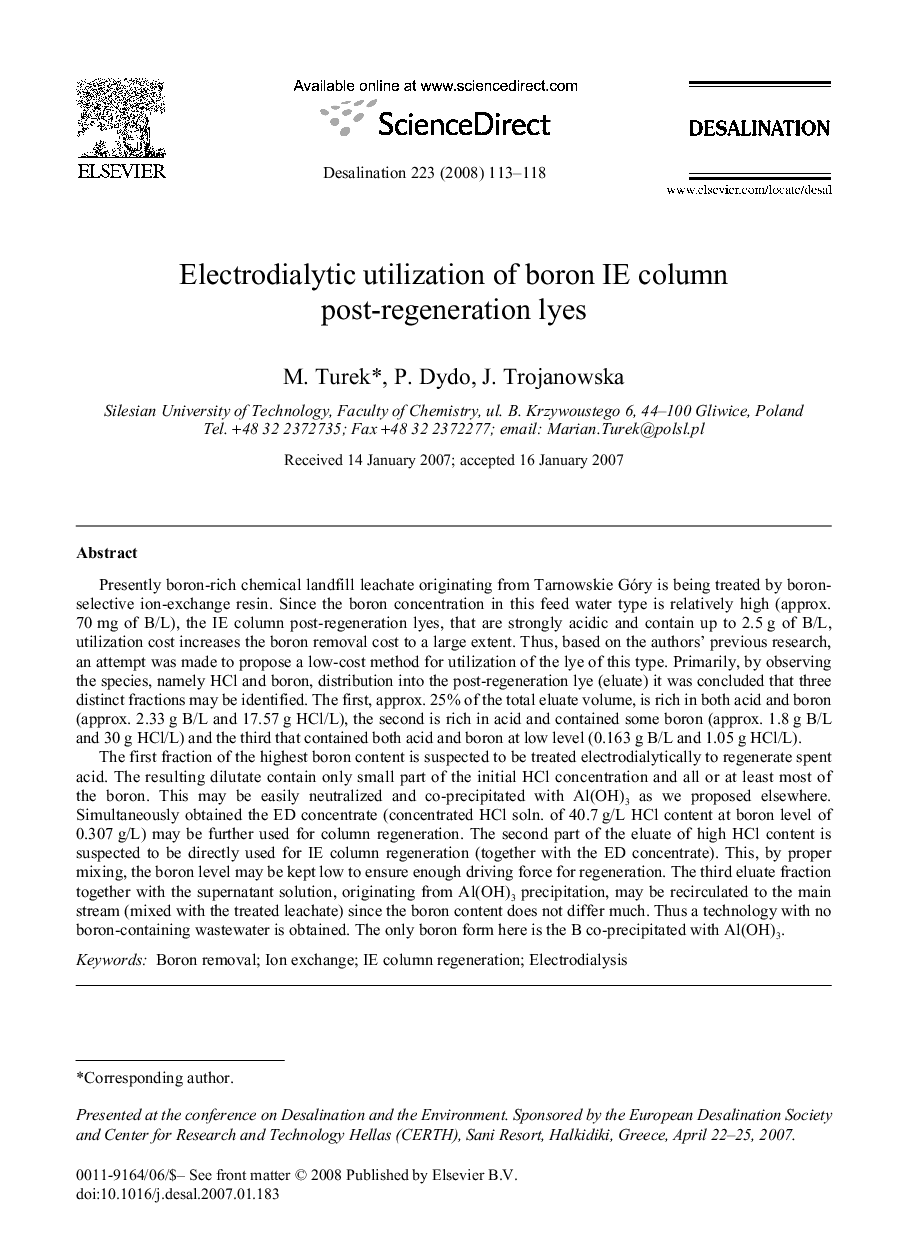| کد مقاله | کد نشریه | سال انتشار | مقاله انگلیسی | نسخه تمام متن |
|---|---|---|---|---|
| 627552 | 1455467 | 2008 | 6 صفحه PDF | دانلود رایگان |

Presently boron-rich chemical landfill leachate originating from Tarnowskie Góry is being treated by boron-selective ion-exchange resin. Since the boron concentration in this feed water type is relatively high (approx. 70 mg of B/L), the IE column post-regeneration lyes, that are strongly acidic and contain up to 2.5 g of B/L, utilization cost increases the boron removal cost to a large extent. Thus, based on the authors’ previous research, an attempt was made to propose a low-cost method for utilization of the lye of this type. Primarily, by observing the species, namely HCl and boron, distribution into the post-regeneration lye (eluate) it was concluded that three distinct fractions may be identified. The first, approx. 25% of the total eluate volume, is rich in both acid and boron (approx. 2.33 g B/L and 17.57 g HCl/L), the second is rich in acid and contained some boron (approx. 1.8 g B/L and 30 g HCl/L) and the third that contained both acid and boron at low level (0.163 g B/L and 1.05 g HCl/L).The first fraction of the highest boron content is suspected to be treated electrodialytically to regenerate spent acid. The resulting dilutate contain only small part of the initial HCl concentration and all or at least most of the boron. This may be easily neutralized and co-precipitated with Al(OH)3 as we proposed elsewhere. Simultaneously obtained the ED concentrate (concentrated HCl soln. of 40.7 g/L HCl content at boron level of 0.307 g/L) may be further used for column regeneration. The second part of the eluate of high HCl content is suspected to be directly used for IE column regeneration (together with the ED concentrate). This, by proper mixing, the boron level may be kept low to ensure enough driving force for regeneration. The third eluate fraction together with the supernatant solution, originating from Al(OH)3 precipitation, may be recirculated to the main stream (mixed with the treated leachate) since the boron content does not differ much. Thus a technology with no boron-containing wastewater is obtained. The only boron form here is the B co-precipitated with Al(OH)3.
Journal: Desalination - Volume 223, Issues 1–3, 1 March 2008, Pages 113-118